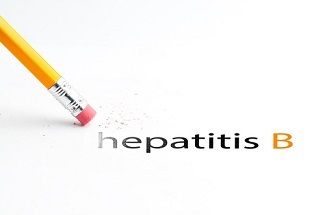Public Health Watch: New HBV Vaccine Shows Promise in Phase 3 Trial
New shot fills a vital need, given poor efficacy of earlier options, researchers say.

Here are some numbers:
- 257 million
- 887,000
- 27 million
These figures, respectively, represent the number of infections, deaths and confirmed cases attributed to hepatitis B globally, according to the World Health Organization, based on the most recent data available—and they’re eye-opening. Imagine: nearly 90% of those infected don’t even know their status.
All these stats highlight why an effective vaccine against hepatitis B virus (HBV) is so desperately needed. However, options to date have offered less than 75% protection, depending on the population study. Impressive, yes, but not enough to significantly reduce cases.
Enter Sci-B-Vac (VBI Vaccines). In a phase 3 trial, published on May 11 in The Lancet Infectious Diseases, the 3-antigen shot yielded a seroprotection rate (SPR) of 91.4% in adults 18 years of age and older. The single-antigen vaccine used as a comparator produced an SPR of 76.5%.
“Data from this pivotal Phase 3 study, PROTECT, highlight the ability of the 3-antigen HBV vaccine candidate to induce higher seroprotection rates and hepatitis B surface antibody titers in all adults, regardless of age, diabetic status, BMI, gender, race, and smoking status, compared to … a single-antigen, yeast-derived HBV vaccine,” Francisco Diaz-Mitoma, MD, PhD, study coauthor and chief medical officer at VBI Vaccines told Contagion. “Moreover, the 3-antigen vaccine induced higher seroprotection rates and hepatitis B surface antibody titers in all adults at all timepoints compared to the single-antigen vaccine.We believe the findings from the PROTECT study showcase the value of [the vaccine’s] unique design and its potential to be a meaningful additional intervention in the fight against hepatitis B.”
As Dr. Diaz-Mitoma notes, adult HBV vaccination rates in the U.S. have remained stubbornly low for a decade or more—less than 40% among travelers to regions in which the virus is endemic and about 25% overall, research indicates. This has left “vulnerable and recommended populations” at risk, he said.
At least part of the reason for vaccine hesitancy, in the case of HBV, in the US, according to Diaz-Mitoma, is the “reduced immunogenicity in older adults, obese individuals, smokers, adults with diabetes, and chronic kidney or liver failure patients” offered by the currently available, single-antigen, yeast-based shots.
The phase 3 trial compared the SPRs of the 3-antigen Sci-B-Vac with those of the single-antigen Engerix-B (GlaxoSmithKline) in 1,607 participants, with 796 allocated to the former and 811 allocated to latter, he and his colleagues said.
Notably, in participants 45 years of age and older, SPR for the Sci-B-Vac group was 89.4%, compared with 73.1% in the Engerix-B group. Although Sci-B-Vac was associated with higher rates of mild or moderate injection site pain (in 63.2% of patients vs. 36.3%), tenderness (in 60.8% vs 34.8%), and myalgia (34.7% vs 24.3%), the safety profiles of the 2 shots were otherwise similar.
“Our 3-antigen HBV vaccine candidate is scientifically differentiated from other currently available HBV vaccines, and was developed in an effort to help address the unmet medical and public health needs in the prevention of HBV infection,” Diaz-Mitoma said. “The HBV genome encodes for three distinct surface antigens—pre-S1, pre-S2, and S—all of which are present on the surface of the wildtype virus. Additionally, the pre-S1 and pre-S2 regions have been shown to be significantly more immunogenic at the T and B cell levels than S alone. The unique combination of the 3-antigen conformation, compared [with] a single S antigen HBV vaccine, and the mammalian cell derivation, compared to yeast-derived HBV vaccines, enable [Sci-B-Vac] to elicit a robust immune response against HBV infection."
